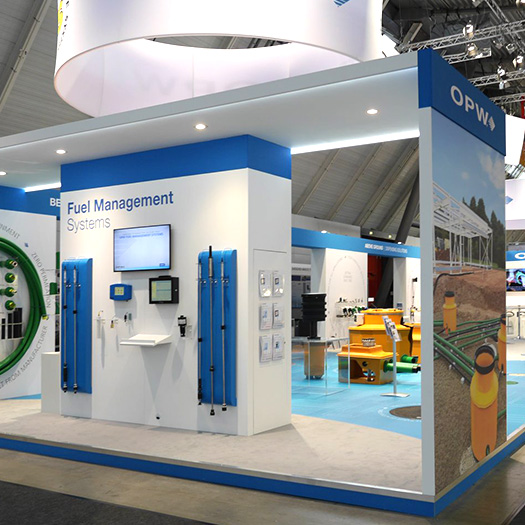Reducing the Dreaded Drayage Costs
Published on June 4th, 2019
in Uncategorized
Many first-time exhibitors experience major sticker shock when they receive their drayage bill from the trade show’s general service contractor (GSC). Drayage is an industry term for the material handling of your exhibit items between the carrier’s vehicle and your booth space. Surprisingly (and often shockingly), drayage can be as much or even more than the cost to ship your items to the show. There are many reasons why drayage costs are so high, most of them involving factors that are out of your control. But there are ways you can significantly reduce your total drayage with a little planning.
Lighten up.

Drayage rates are based on hundredweight (CWT). So every 100 pounds of items you have gets multiplied by the labor rate. It’s almost always rounded up, so 460 pounds will be considered 5 CWT.
The easiest thing you can do to reduce costs is to reduce weight. Opt for lighter-weight displays and hardware. New aluminum products weigh far less than older, bulkier predecessors. And make sure every item you’re bringing is absolutely necessary for a successful show.
Another way to lighten the load is with less collateral. An estimated 80% of printed pieces at trade shows end up in the trash can. Bring fewer copies, or eliminate them altogether if possible by handing out cards with a link to the same information on your website.
Consolidate.

Every individual piece of freight will incur a minimum charge. Try to bundle items on skids as efficiently as possible, to have as few separate pieces of freight as possible. Keeping in mind CWT, try to keep the weight of each piece to the nearest 100 pounds. For example, if one box weighs 475 pounds and another weighs 510, try to redistribute the weight so that both are close to 500 pounds.
Package deals.
Often, show organizers will negotiate with the GSC to provide package deals combining drayage and other services. Usually, this amounts to no-cost freight handling for a certain amount of weight based on the square footage of your booth, without additional drayage charges.
Be on time.
If you think drayage rates are high, wait until you have to pay overtime. Make note of loading and unloading times, and make sure your carrier knows as well.
Double-check.
Keep a watchful eye on your invoices. Mistakes happen, and they can be costly. Knowing what your freight actually weighs will help insure you know you are being charged the correct amount.
Weigh your options.
Finally, make sure you look at different carriers. Don’t assume your getting the best rate. Talk to the show organizers to see if they have any discounted options available. Bottom line: be smart and travel light.
 Drayage rates are based on hundredweight (CWT). So every 100 pounds of items you have gets multiplied by the labor rate. It’s almost always rounded up, so 460 pounds will be considered 5 CWT.
The easiest thing you can do to reduce costs is to reduce weight. Opt for lighter-weight displays and hardware. New aluminum products weigh far less than older, bulkier predecessors. And make sure every item you’re bringing is absolutely necessary for a successful show.
Another way to lighten the load is with less collateral. An estimated 80% of printed pieces at trade shows end up in the trash can. Bring fewer copies, or eliminate them altogether if possible by handing out cards with a link to the same information on your website.
Drayage rates are based on hundredweight (CWT). So every 100 pounds of items you have gets multiplied by the labor rate. It’s almost always rounded up, so 460 pounds will be considered 5 CWT.
The easiest thing you can do to reduce costs is to reduce weight. Opt for lighter-weight displays and hardware. New aluminum products weigh far less than older, bulkier predecessors. And make sure every item you’re bringing is absolutely necessary for a successful show.
Another way to lighten the load is with less collateral. An estimated 80% of printed pieces at trade shows end up in the trash can. Bring fewer copies, or eliminate them altogether if possible by handing out cards with a link to the same information on your website.
 Every individual piece of freight will incur a minimum charge. Try to bundle items on skids as efficiently as possible, to have as few separate pieces of freight as possible. Keeping in mind CWT, try to keep the weight of each piece to the nearest 100 pounds. For example, if one box weighs 475 pounds and another weighs 510, try to redistribute the weight so that both are close to 500 pounds.
Every individual piece of freight will incur a minimum charge. Try to bundle items on skids as efficiently as possible, to have as few separate pieces of freight as possible. Keeping in mind CWT, try to keep the weight of each piece to the nearest 100 pounds. For example, if one box weighs 475 pounds and another weighs 510, try to redistribute the weight so that both are close to 500 pounds.


